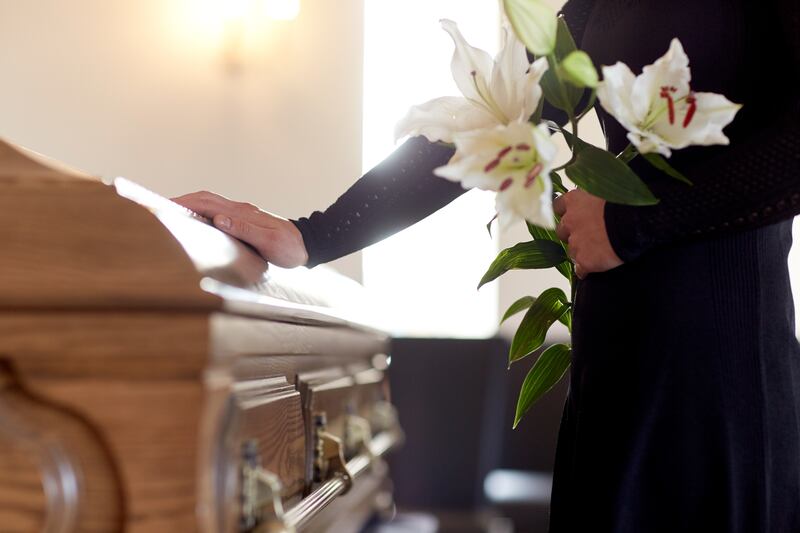I asked my daughter for help to film videos of recipes from the family cookbook. She thought I was going to be posting on Instagram — a new foodie account, maybe. I told her no, it was for the family cookbook that is in a Google folder. I want the videos to be useful now and a way to remember me after I’m gone.
“Wow. That got dark fast,” she said.
I then told her that I had been writing about end-of-life planning and that she and her husband needed wills. I also told her they needed a written and agreed-upon-plan for who would become the guardians for their toddler if something were to happen to both of them. She told me she couldn’t even think about that possibility. It was too overwhelming.
She is not alone.
Here’s what’s ironic: A whopping 84% of the U.S. population over age 13 (including my daughter) consumes true crime media, according to Edison Research. It’s the most common topic among top-ranked podcasts. First-person shooter video games are the most popular genre.
Why is it so hard?
So why is it so hard to talk about our own mortality?
Maybe we think we can live forever. There’s an $18 billion anti-aging market. Cryogenics companies offer “a second chance at life” and “life extension within reach.”
A survey done last year explored reasons why people are uncomfortable talking about death. The top reason given (37%) was that people did not want to upset others, and the second (34%) was that it is too depressing to think about. About one in five say they’ll “cross that bridge when they come to it” or that they are afraid of dying. Ten percent are afraid that talking about death will somehow make it more likely to happen.
A family medicine doctor shared in the Seattle Times that “many medical professionals act as if death is a problem to be solved, rather than a process to be lived.” Consequently, he wrote, while 92% of people believe talking with their loved ones about end-of-life care is important, only 32% of people do so, and while 97% of people say it’s important to put their end-of-life wishes in writing, only 37% of people have such written documentation. An AARP article from a couple of years ago notes that only one-third of Americans have a will or trust set up.
Sanitized death
Death used to be a normal part of life, and by that, I mean it wasn’t separated from daily living or from the family, and it often happened at home. Family members would wash their deceased loved one’s body. A wake was often held at home, sometimes with the deceased lying in a simple coffin on the kitchen table. In the Victorian age, it became at least somewhat popular to take a family photo with the loved one, often a child, after they had died, posing or propping them as if they were still alive. Burials happened in small church yards, or even on family property.
Now, Western culture has “sanitized” death and has removed it from the average person’s experience. Generally speaking, death is left to hospitals and funeral parlors. In many ways, that has done a disservice to our society. In his book “Being Mortal,” surgeon Atul Gawande writes, “Scientific advances have turned the processes of aging and dying into medical experiences, matters to be managed by healthcare professionals ... Our reluctance to honestly examine the experience of aging and dying has increased the harm we inflict on people and denied them the basic comforts they most need.”
Making death normal
So how do we normalize conversations about death and dying?
Shoshana Ungerleider, M.D., is an internal medicine physician and the host of the TED Health Podcast. In 2017, she founded End Well, a nonprofit on a mission to transform how the world thinks about, talks about and plans for the end of life. This year’s annual conference (scheduled for November) is built around the theme of “Radical Bravery,” about showing up, even when it’s hard.
When I asked my friends online if they had “death conversations,” I had fewer than usual comments — and almost all of them were from people who had personal experience with death and dying, or who were single parents worried about their children. Michelle Scharf, widowed at a young age, said “After losing John, I realized the weight of the chores after death. I have a trust and two executors; I update it regularly and with life changes. I inform my adult children in casual conversation, ‘Hey, I just updated the trust to XYZ.’ My kids know where to access the trust, and my financial planner has a copy.”
An attorney friend of mine, Nancy Sylvester, said she started a spreadsheet and has had discussions, but, “like the cobbler without shoes,” they don’t have executed documents “despite my knowing better as an attorney,” she wrote.
There are a growing number of books on the market that normalize death. Some of my favorites include “When Breath Becomes Air” by Paul Kalanithi, “A Grief Observed” by C.S. Lewis (admittedly about what happens after a death), “Tuesdays with Morrie” by Mitch Albom, “The Last Lecture” by Randy Pausch and “The In-Between: Unforgettable Encounters During Life’s Final Moments” by Hadley Vlahos.
Perhaps an entry point into conversations with our loved ones — parents, children and friends — is to look for natural opportunities to talk about it. My daughter, in spite of thinking it was “dark” to record myself making cooking videos, is coming over this weekend to teach me how to do better videos.
We’ll chat again about her plans, and our plans too.


